Myungkoo Kang
Deep Convolutional Neural Networks to Predict Mutual Coupling Effects in Metasurfaces
Feb 02, 2021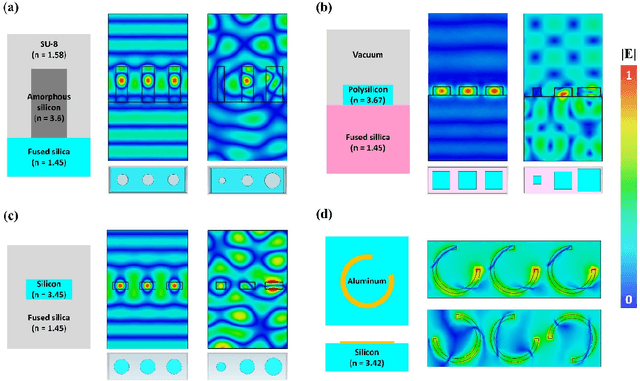
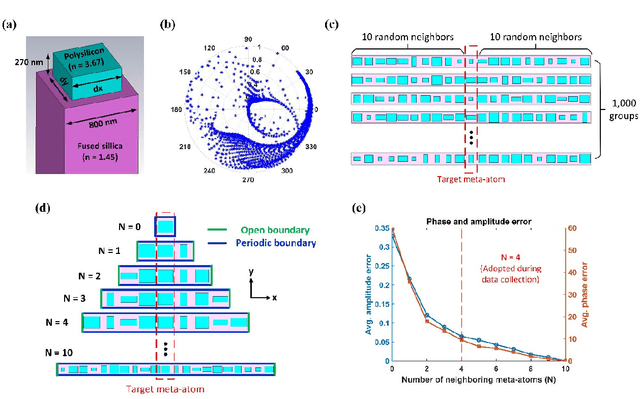
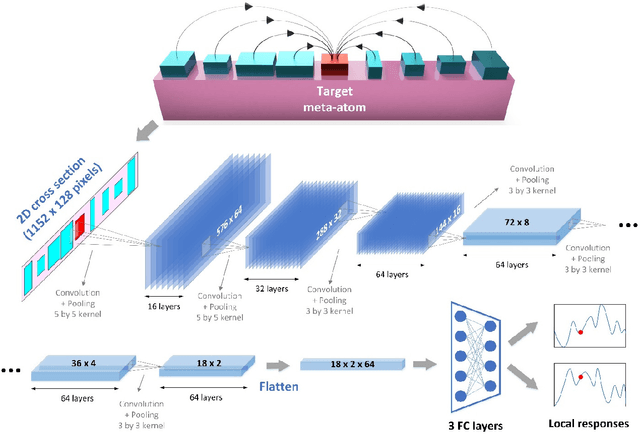
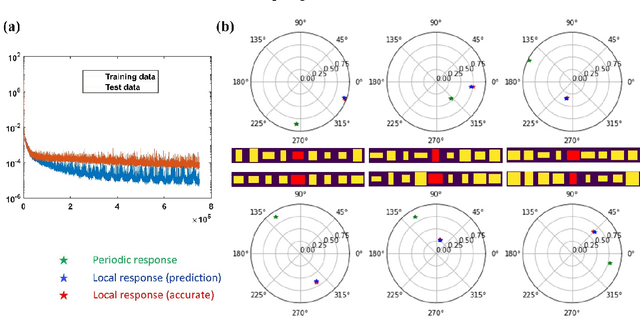
Abstract:Metasurfaces have provided a novel and promising platform for the realization of compact and large-scale optical devices. The conventional metasurface design approach assumes periodic boundary conditions for each element, which is inaccurate in most cases since the near-field coupling effects between elements will change when surrounded by non-identical structures. In this paper, we propose a deep learning approach to predict the actual electromagnetic (EM) responses of each target meta-atom placed in a large array with near-field coupling effects taken into account. The predicting neural network takes the physical specifications of the target meta-atom and its neighbors as input, and calculates its phase and amplitude in milliseconds. This approach can be applied to explain metasurfaces' performance deterioration caused by mutual coupling and further used to optimize their efficiencies once combined with optimization algorithms. To demonstrate the efficacy of this methodology, we obtain large improvements in efficiency for a beam deflector and a metalens over the conventional design approach. Moreover, we show the correlations between a metasurface's performance and its design errors caused by mutual coupling are not bound to certain specifications (materials, shapes, etc.). As such, we envision that this approach can be readily applied to explore the mutual coupling effects and improve the performance of various metasurface designs.
A Freeform Dielectric Metasurface Modeling Approach Based on Deep Neural Networks
Jan 01, 2020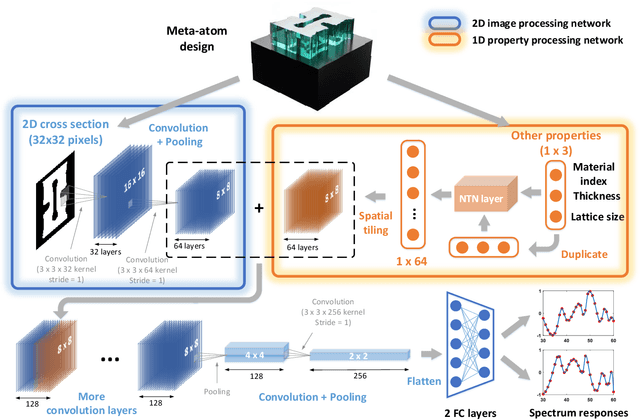
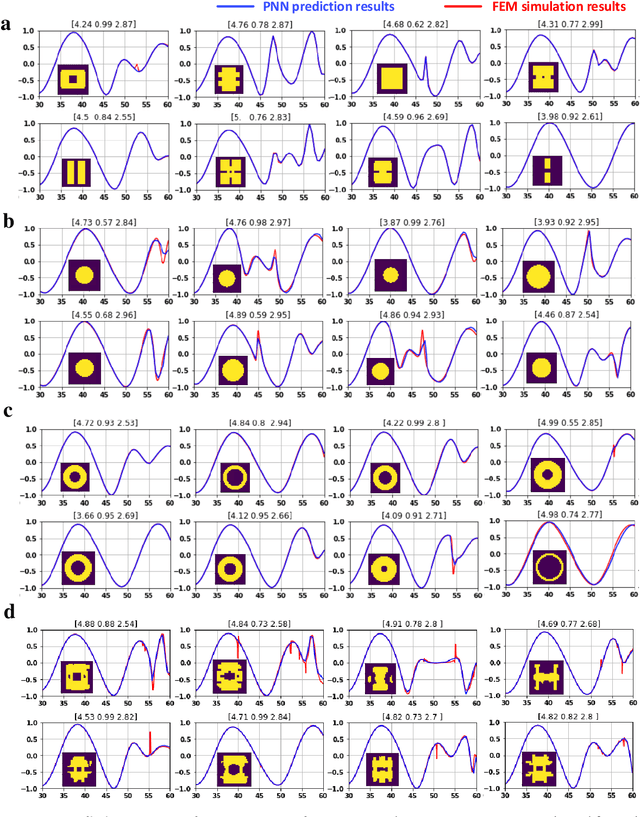
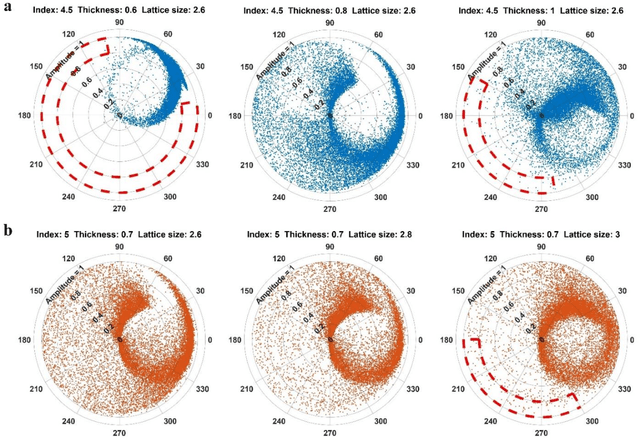
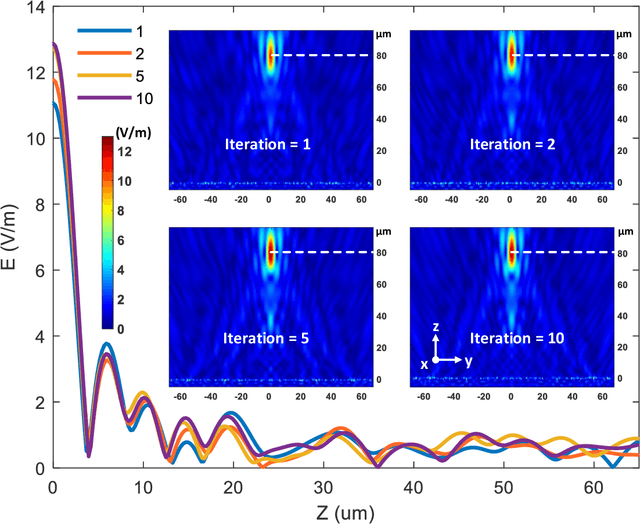
Abstract:Metasurfaces have shown promising potentials in shaping optical wavefronts while remaining compact compared to bulky geometric optics devices. Design of meta-atoms, the fundamental building blocks of metasurfaces, relies on trial-and-error method to achieve target electromagnetic responses. This process includes the characterization of an enormous amount of different meta-atom designs with different physical and geometric parameters, which normally demands huge computational resources. In this paper, a deep learning-based metasurface/meta-atom modeling approach is introduced to significantly reduce the characterization time while maintaining accuracy. Based on a convolutional neural network (CNN) structure, the proposed deep learning network is able to model meta-atoms with free-form 2D patterns and different lattice sizes, material refractive indexes and thicknesses. Moreover, the presented approach features the capability to predict meta-atoms' wide spectrum responses in the timescale of milliseconds, which makes it attractive for applications such as fast meta-atom/metasurface on-demand designs and optimizations.
 Add to Chrome
Add to Chrome Add to Firefox
Add to Firefox Add to Edge
Add to Edge